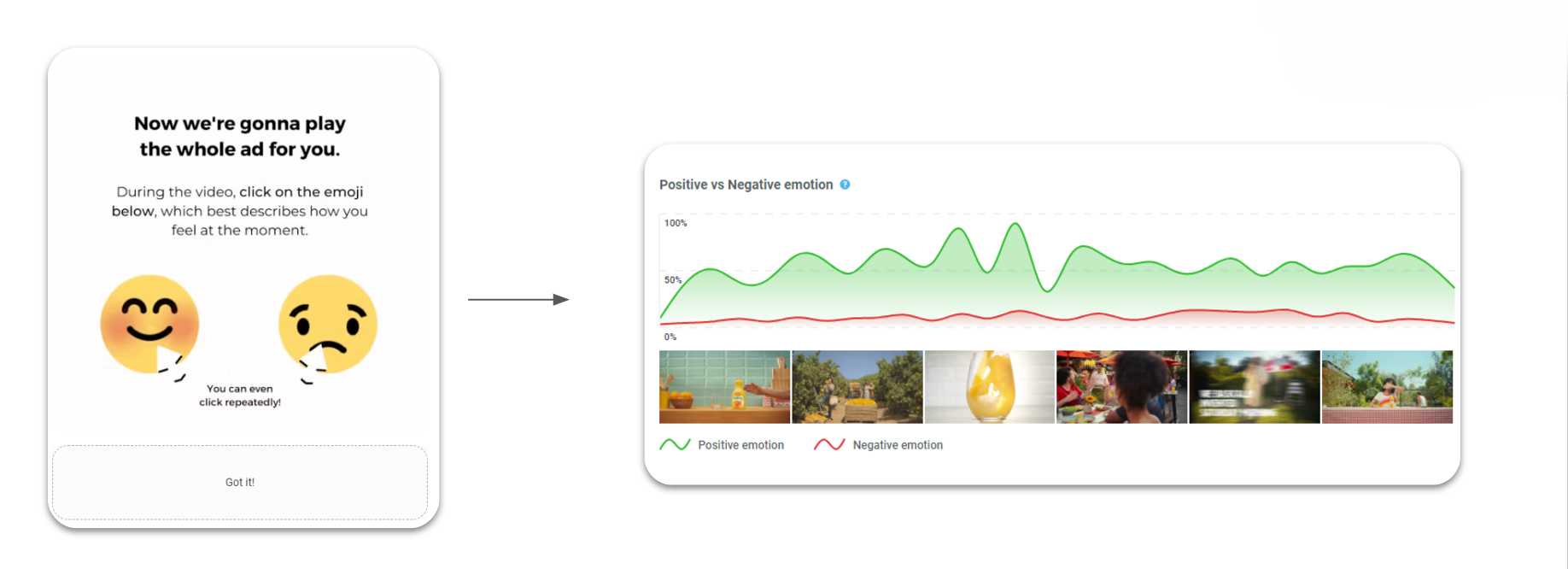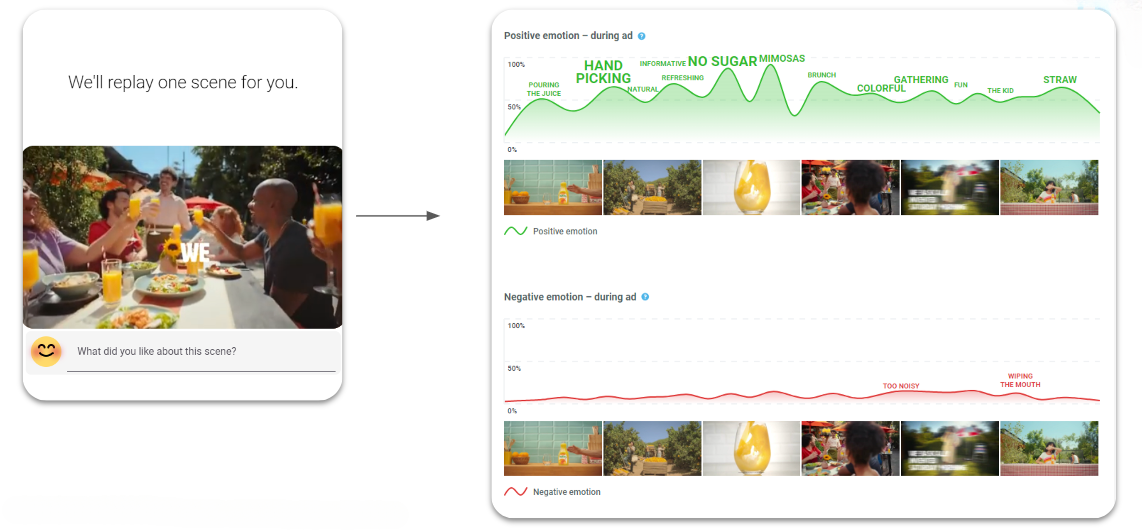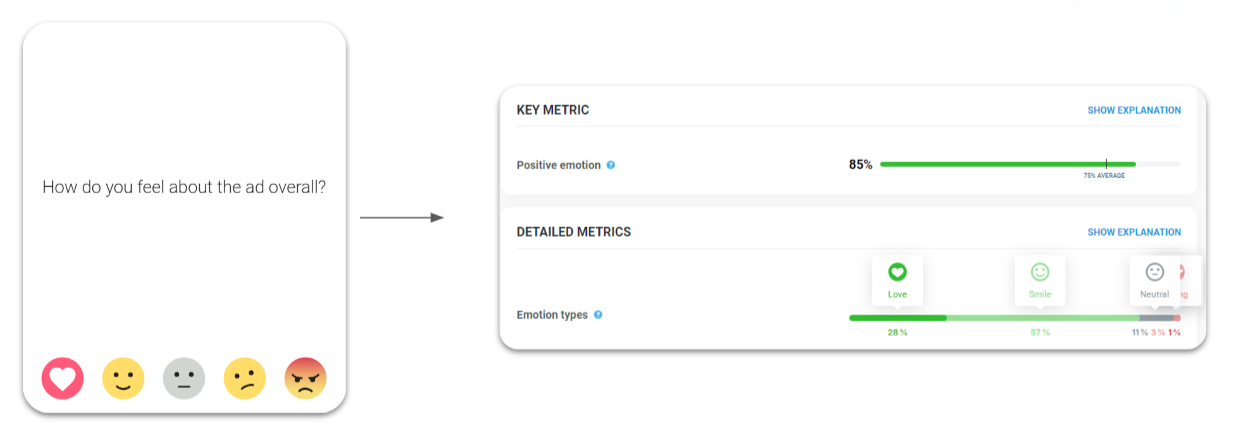What is Emotion, and how do we measure it?
This article covers:
- What is Emotion, and how does it work in advertising?
- How do we measure Emotion?
- How to get Emotion right in an ad?
What is Emotion, and how does it work in advertising?
Emotion is an amplifier. The first thing your ad needs to do is attract attention: stand out, get noticed, and be remembered.
However, it must work together with the other two elements—Need and Brand. Without them, there’s nothing to amplify and nothing to remember.
How do we measure Emotion?
How do we map emotional response curves?
Respondents watch the full ad and click either negative or positive emojis whenever those emotions best describe how they feel in the moment. This allows us to map fluctuations in emotional responses—both positive and negative—throughout the ad.

To dive deeper, we replay one specific scene and ask respondents to describe what they liked about it in an open-ended format. These responses are visualized as a word cloud, aligned with the emotional curve, to highlight moments that evoke the most positive reactions.

How do we measure overall emotional response?
After viewing the ad, respondents use emoticons to indicate their overall feelings about it. A positive emotion includes both love and smile reactions.
The results include a percentage of respondents who reported a positive emotion, along with a detailed percentage breakdown of each emotion type.

Emotion quotes
Respondents then share their overall impressions of the ad in their own words. These verbatim responses are included in the results to provide additional context and depth to the emotional analysis.

How to get emotion right?
In the past, advertising was all about rational arguments. Now, it’s all about emotion. But that’s only partially true.
When planning your emotionally engaging ad, don’t forget to account for Need and Brand as well. All three elements need to appear simultaneously for maximum impact.
Be distinctive and unexpected.
We pay attention to things that challenge our expectations. If your category goes right, go left.
Rule of the first 5 seconds.
In the era of digital video, ad-skipping, and people feeling overwhelmed or annoyed by advertising, you must grab their attention in the first second of your ad. Attention is usually sparked by a strong emotional reaction.
Exploit your emotional peak for maximum impact.
While showcasing that clever joke or adorable puppy, always ensure you display Need and Brand (e.g., brand symbols) at the same time.
The ad must be easy to understand.
Fluency is a key element in advertising. The harder it is for the brain to process information, the weaker the emotional response. Studies also show that people prefer things they are already familiar with.
Only positive emotions truly work.
Anything that provokes rage or anger will fail. Remember that different people perceive different things as offensive, so tread carefully.
Strive to connect, not divide.
People share the same basic needs, even if they appear to disagree on the surface. The most powerful advertisements aim to connect people in a positive way.
